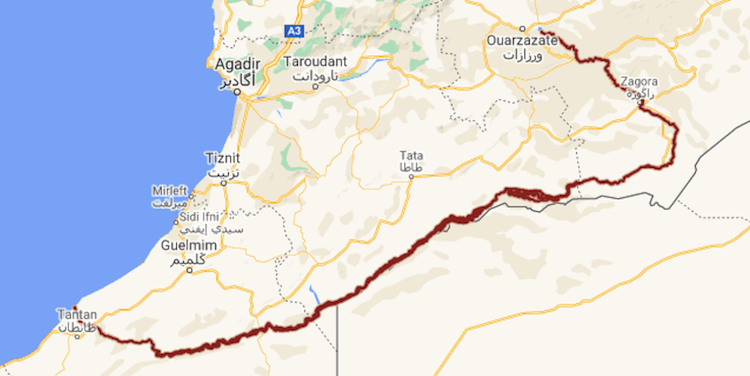
Oued Drâa, the longest river in Morocco with 1,100 kilometers.
South of the Atlas Mountains, The Drâa Valley, It’s the largest palm grove in the world, a green corridor 200 kilometers long and 18 wide that runs from Agdz to Zagora. A unique ecosystem, classified as a biosphere reserve by Unesco, where the inhabitants perpetuate an ancestral agricultural tradition. This region is a must visit in Morocco.
A Luxury tailor-made tour to explore Draa Valley and fully experience the Sahara desert...
Explore This tourIn this article, we are going to take you further south, where dunes and horizon mingle. - Our Ultimate Morocco tour: Marrakech and Sahara desert is the perfect tour to discover Draa valley - You will discover the slow rhythm of local life: harvest of dates, figs and almonds, peasants maintaining the irrigation canals (seguias), women grinding henna with stone grindstones... Here, modern life seems to be running out of steam, to the point of making you lose track of time. By the road which connects Ouarzazate to M'hamid el Ghizlan, you leave the last foothills of the anti-Atlas to reach the first dunes.
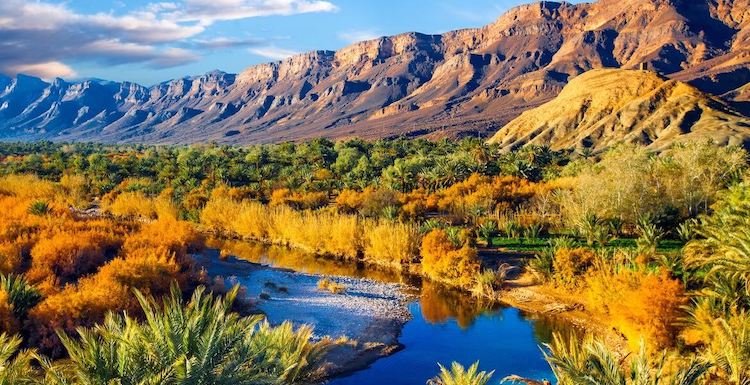
The salt lake Iriki, Morocco, Africa
On your way, the most beautiful kasbahs and ancient ksours of Morocco will impress you with their adobe architecture, the largest oasis in the world lost in the desert will greet you and give way to the Saharan immensities. In the ocher dunes of Erg Lihoudi or the endless expanses of Iriki Lake , the magic of the desert awaits you.
70 km south of Ouarzazate, Agdz marks the starting point of the most beautiful part of the Drâa valley. Built at the foot of Jebel Kissane, culminating at 1600 meters, the city dominates the wadi and its immense palm grove. The ocher mountain and the date palms immediately immerse you in the local colors. The historic district of Aslim is home to magnificent mud kasbahs. Jewels of Berber architecture, the kasbahs are the former places of residence of the caïds, the chiefs of local tribes. Built in the 18th century, the Kasbah Caïd Ali is part of the national heritage of Morocco.
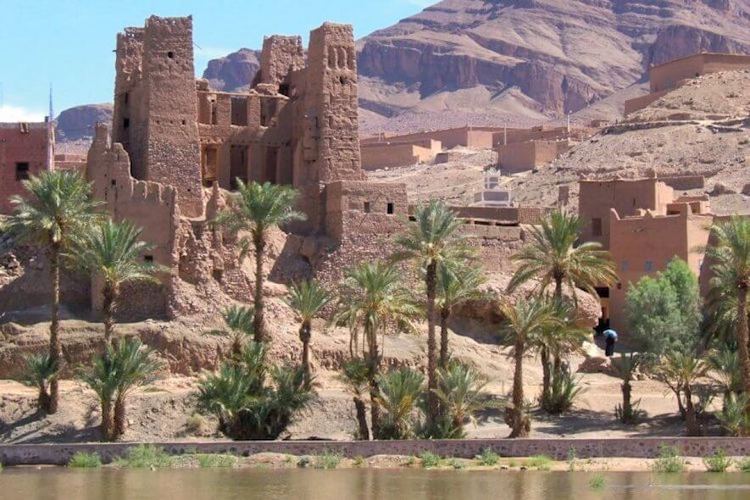
Agdz Oasis, Morocco, Africa
The descendants of the Caïd offer tours to learn all about the architecture and history of the place. Next door, the Kasbah des Arts has been converted into a guest house. It is also worth a detour for its superb panoramic view. Several charming accommodations are located in the heart of the oasis, ideal for a nature stay!
If the heat makes you want to take a dip, don't miss this lovely waterfall nestled in a narrow canyon. A dozen kilometers from Agdz in the direction of Ouarzazate, a road branches off to the right and crosses a mineral and arid landscape. After 30 minutes, you arrive in this little heavenly setting. You will bathe in a pretty pool surrounded by oleanders, in the shade of the immense rock walls. Usually, on Sunday you will find young boys and girls having fun and playing music.
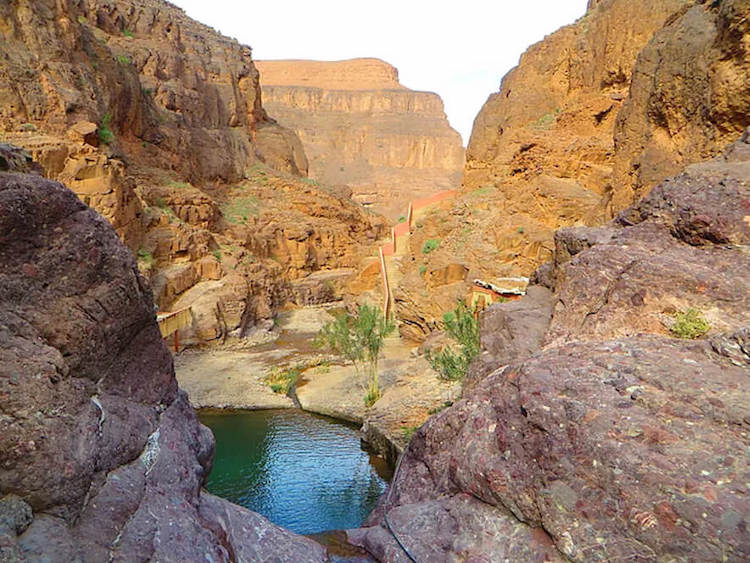
Tizgui Waterfall, Zagora, Morocco
6 km from Agdz, the ksar of Tamnougalt rises above a carpet of green palm trees. The historical capital of the Berber tribe of Mezquita, Tamnougalte has occupied a strategic position along the Drâa river. Built in the 16th century, its fortified mud village is one of the oldest and best-preserved in the valley.
Stroll through the maze of alleys and admire the finesse of the traditional Amazigh architecture, then visit the old Casbah of the Caïd. Inhabited until the 1960s, it has been converted into a museum. In front of the ksar, you will see another casbah perched on a rocky promontory. It is abandoned but offers a breathtaking view of the surroundings.
This magical setting hosted the shooting of several films, including Babel by Alejandro González Iñárritu and Un thé au Sahara by Bernardo Bertolucci.
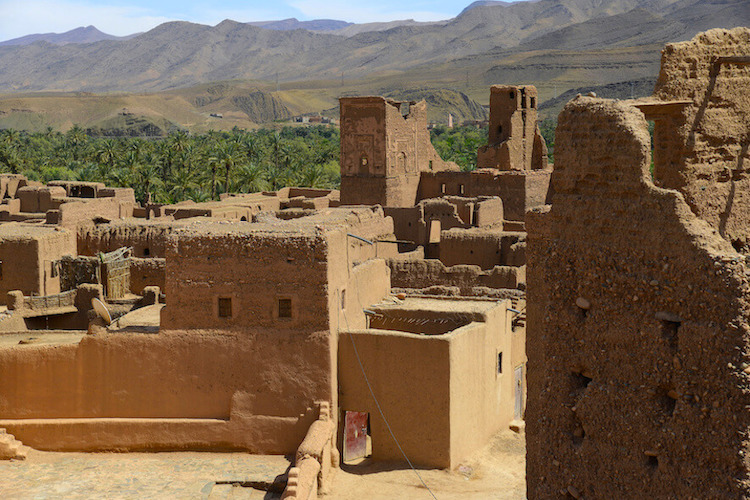
Tamnougalt, a kasbah and date palm oasis in the Atlas Mountains, located in the Draa River valley in Morocco
54 km south of Tamnougalt, you arrive at the village of Tinzouline. About seven kilometers to the west, the Foum Chenna site is home to one of the largest concentrations of rock carvings in the Moyen-Drâa valley. Over a length of about 800 meters, a vertical rock face is covered with more than 2,500 figures.
You will see hundreds of Libyco-Berber horsemen armed with a round shield or a lance, participating in war scenes or hunting antelopes, gazelles, and oryx. Other engravings represent felines, dromedaries, and ostriches.
The importance of this site is also explained by the presence of 88 inscriptions in the Libyan alphabet, from which the modern Berber languages originate. This makes it the most important rock library in Morocco.
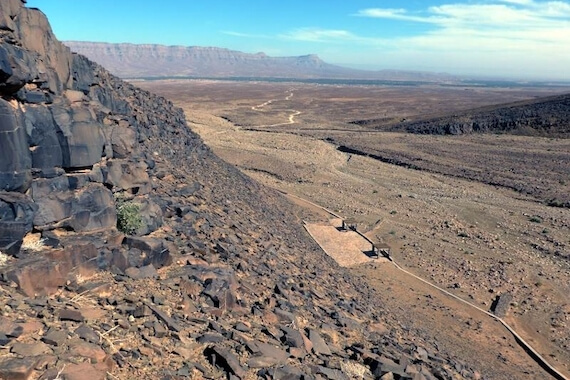
Foum Chenna, The rock heritage of South East Morocco
(Jbel Bani Geopark)
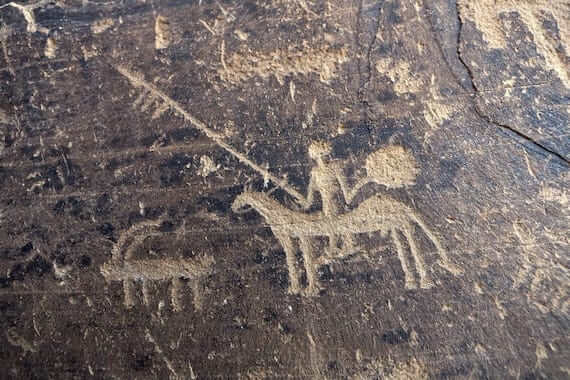
Rupestrian engravings, a rich raw material that allows you to discover the prehistory.
The rock engravings of Foum Chenna, are artistic representations made by people from cultural communities who no longer exist. On-site, be careful not to touch the walls. These engravings are fragile.
Its legendary sign indicating "Timbuktu 52 days" recalls that Zagora was once a stopover on the caravan route loaded with salt and gold from Timbuktu. Today, it is the administrative center of the Drâa valley. Indeed, Zagora is a common pitstop on the way to the Sahara Desert. It is the last big town you’ll hit on your way to Erg Chigaga, one of the two major dunes in the Moroccan desert.
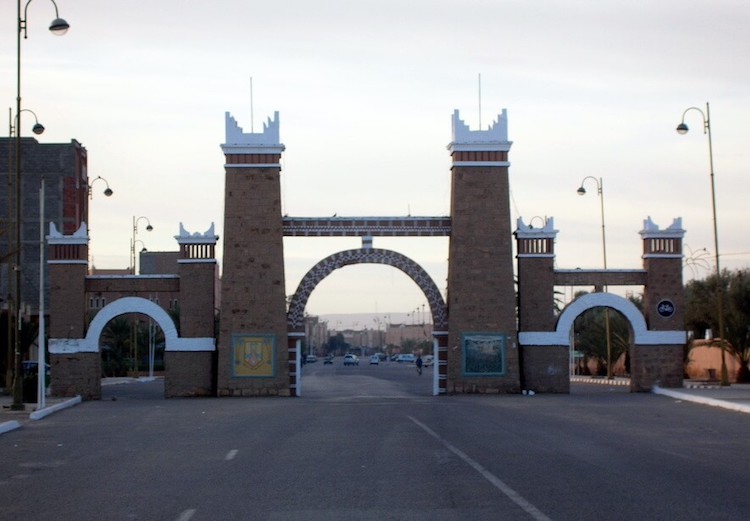
Zagora, a town located in the Draa River valley in the Moroccan region of Drâa-Tafilalet.
Although most travelers won’t spend more than a night in the Zagora oasis, it’s a destination in its own right! With few signs of modernization, it’s a great place to experience traditional Moroccan life. The ideal is to spend Wednesday or Sunday to attend its abundant souk - Biggest Souk in the South - The peasants and the nomads come from far to offer their goods: wheat, fruits, vegetables, cattle, and especially the succulent dates of the region. You will also find a large selection of crafts.
For an original visit to Zagora, treat yourself to a mountain bike excursion to uncover the secret paths of the palm grove and the most beautiful viewpoints in the area.
2 km away from Zagora, the ksar of Amezrou is a beautiful fortified village dating from the 18th century. Admire its mosque with its tall mud minaret and visit its old synagogue.
The ksar hosted a large Jewish community specializing in crafts. In the old Mellah remains ancestral know-how of jewelry.
You can visit the craftsmen's workshops and why not, treat yourself to one of these silver or bronze jewels decorated with geometric or floral motifs.
About twenty kilometers from Zagora, this village is renowned for its unique pottery with elegant shades of green. This characteristic color is obtained thanks to an alloy of manganese and copper oxide.
At the main square of Tamegroute, you find at least seven ovens. Seven ovens belonging to seven pottery families who perpetuate this ancestral technique. Each family has an oven and their own atelier, built of clay. You cannot miss them, as they exhibit their pieces in stores on the side of the road: Vases, bowls, trays, there is something for everyone. Even if you don't buy, go visit the workshops to learn about the manufacturing steps.
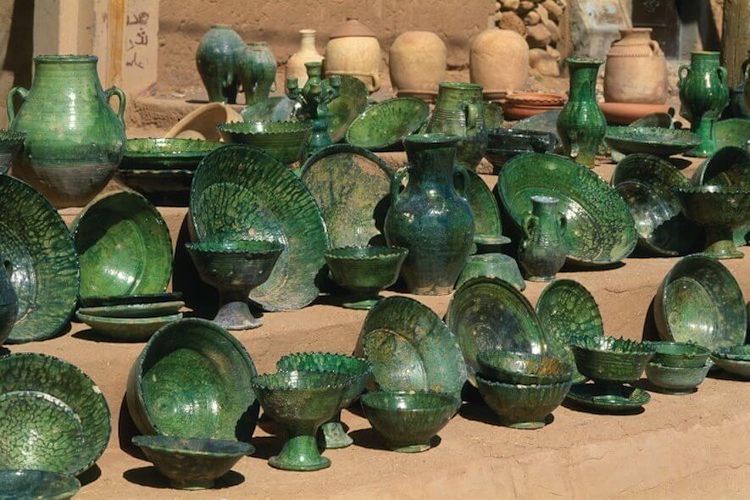
Tamegroute pottery, Morocco, Africa
Tamegroute is also essential for its Koranic library founded in the 17th century. With 4000 manuscripts, the oldest of which is nearly 1000 years old, it is one of the most famous libraries in Morocco. His works on astrology, medicine, history, or poetry still attract students.
To visit the Koranic library, someone welcomes you and explains the history of the library. Leave a few dirhams as a tip. It is open every day except at lunchtime.
Beyond Tamegroute, the road goes away from the valley to pass a stretch of the river, but it reaches back in the oasis of Ktaoua, which was another of the great historic commercial centers such as the Tafilalet when caravans linked Morocco to sub-Saharan Africa.
They seem to have landed there as if by magic. The surprising dunes of Tinfou emerge alone in the middle of a plateau surrounded by mountains. If you fancy a taste of the desert and can't make it to the desert proper, Tinfou is the next best thing. With ridges culminating at 120 meters, these dunes will offer you your first Saharan sensations. The ideal is to come at the end of the day when the sand takes on a soft orange hue to climb and run down the big dunes.
You can also go for a camel ride, a touristy atmosphere, but if you've never been on these famous endless Moroccan Sahara deserts, this is your chance to try!
From M'hamid El Ghizlane, the last village before the vast expanses of the Sahara, the Drâa wadi disappears into the arid expanses, and the last palm trees sink into the sand dunes. Several directions are available to you: 12 km from M'hamid El Ghizlane, You find Erg Lihoudi, a small dune complex with beautiful bivouacs to spend the night in the desert. However, If you dream of wide-open spaces, the best is to go as far as Erg Chigaga, the largest and still untouched of the major ergs in Morocco and our Absolute Morocco destination in Morocco.
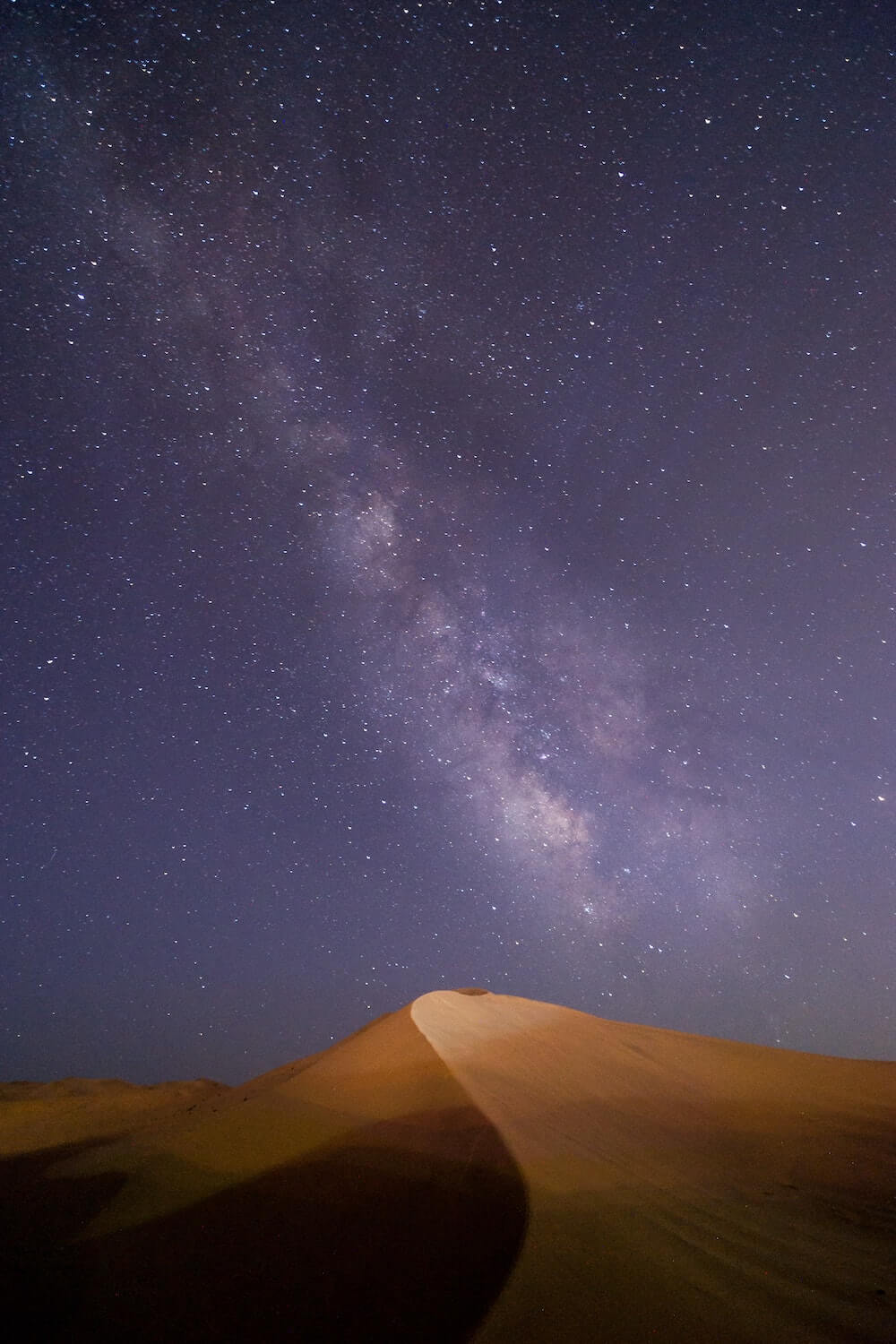
Stargazing in the desert, Morocco, Africa
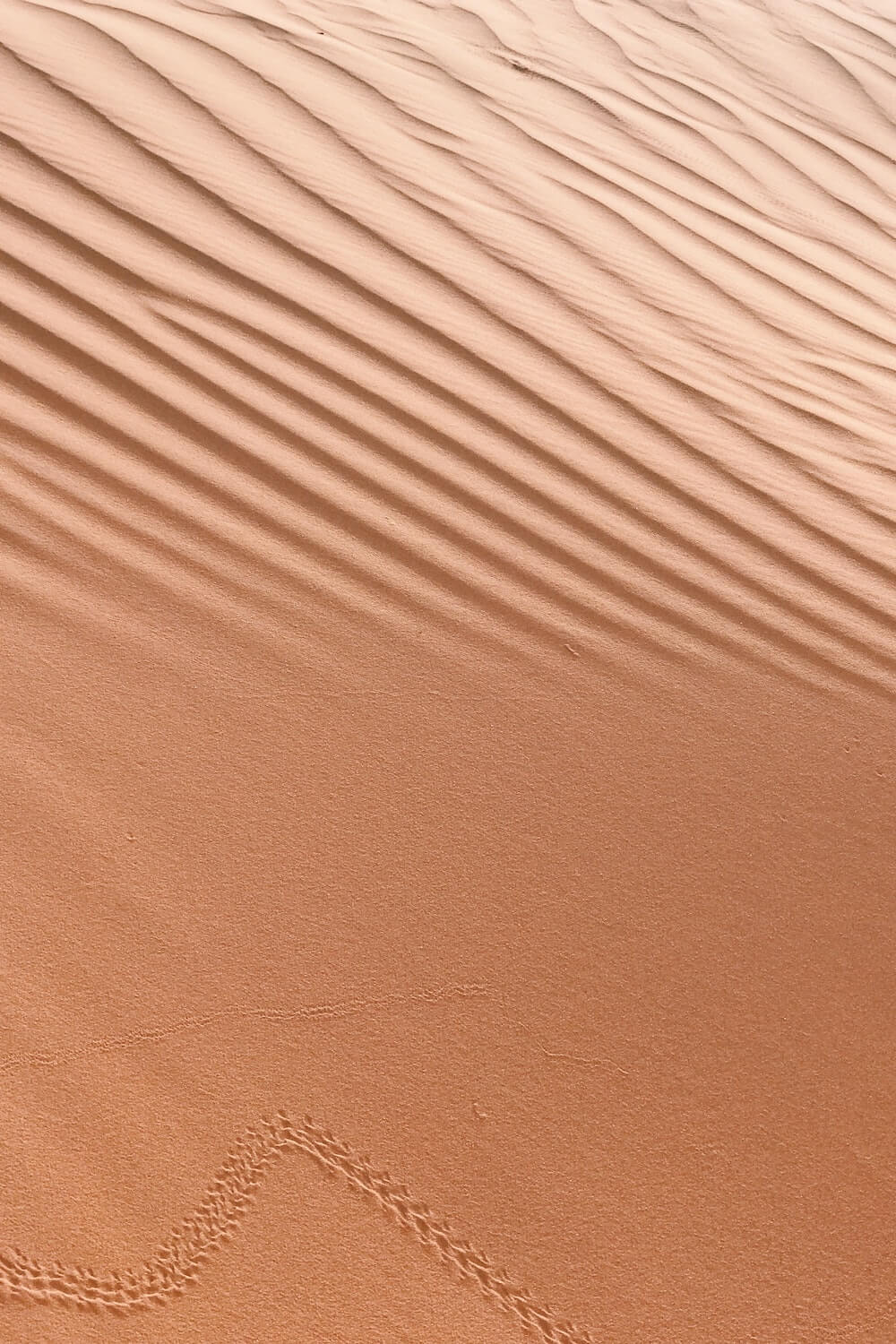
Sand and wind effect in the Sahara desert, Morocco, Africa
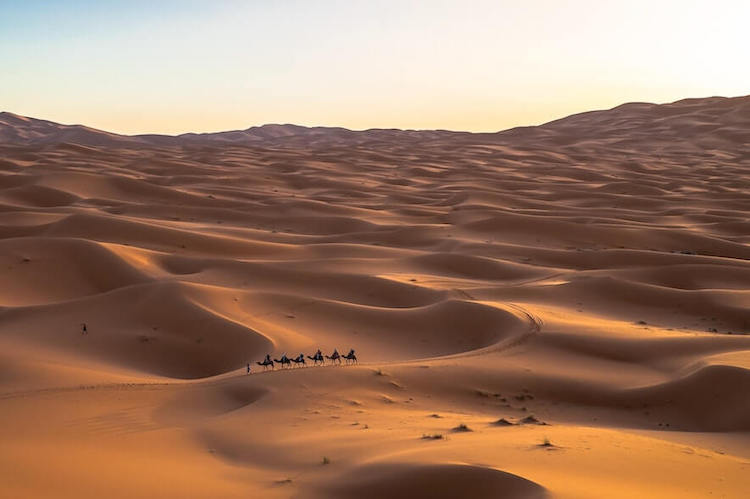
Camel ride in the Sahra desert, Morocco, Africa
To completely change the atmosphere, continue to Iriki Lake, a dry lake creating a 45 kilometers of flat 360 ° desert where you will meet gazelles, oryx, and nomads with their camels, and where your 4x4 will trace as fast as on tar. Adventure scent guaranteed!
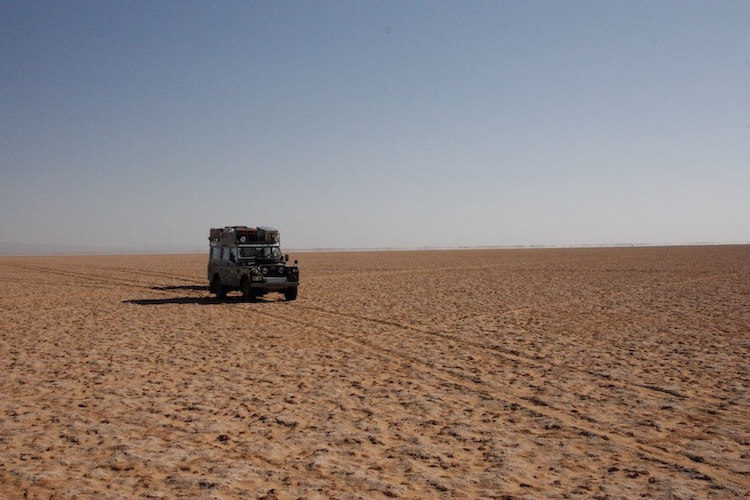
The salt lake Iriki, Morocco, Africa
Erg Chigaga and Iriki Lake are remote areas where you need a trustworthy nomad guide, it’s not a trip you can organize yourself or with a classic guide.
Interested in adding Draa valley to your itinerary? Check out our desert Morocco Tour that includes 5 nights in Draa valley, or start planning your Morocco tour from scratch today. We’d love to help you put your Morocco trip together.